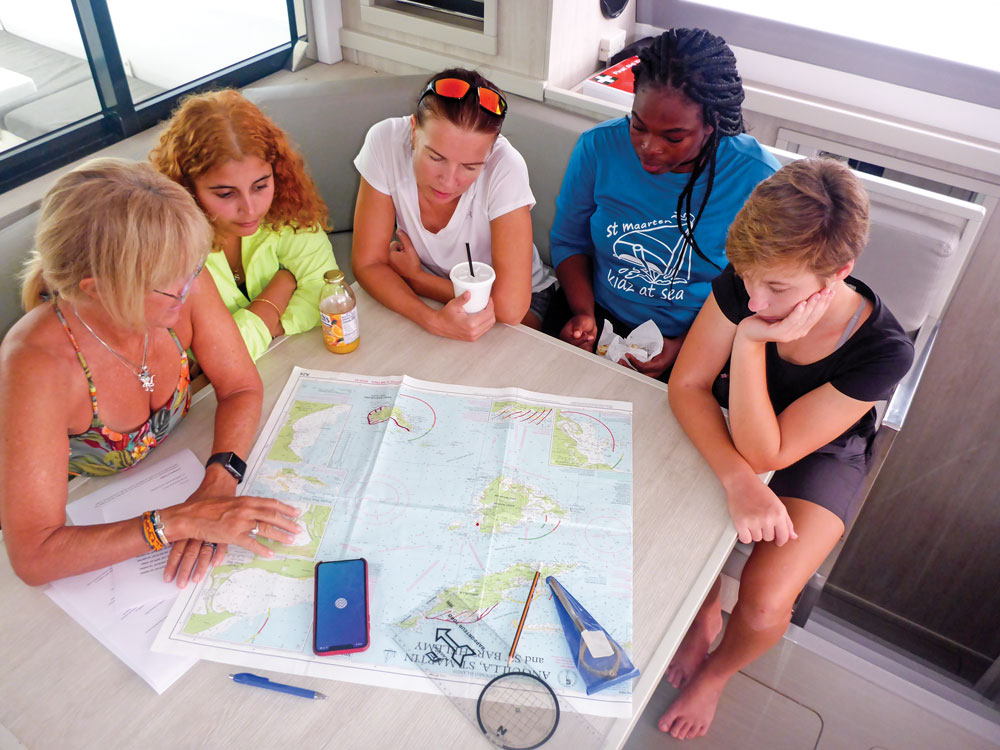Captain your own charter
The waters are teeming with sailors who own and handle their own boats with aplomb. But all too often, these same sailors who skillfully ply their local waters, reject the idea of chartering, over difficulties more perceived than actual. It’s easier than you think! Let’s turn these charter-chickens into chicks who charter.
First off: charter companies would be belly-up if their practice was to put poorly prepared clients in dilapidated boats and lousy cruising conditions. So the first rule of thumb is: charter from a reputable company. It’s in their best interest to furnish you with a well-maintained vessel, provide a thorough chart briefing and boat check and keep you (and their fleet) safe and happy.
And if a well-respected charter company has a base and a business in a location – you can bet it’s probably a desirable vacation destination.

With that in mind, there are a breadth of venues available, so research and understand where you’re going. Are there seasonal weather conditions? Trust me, you don’t want to go to Thailand in the rainy season. What kind of activities are you interested in? Swimming and snorkeling, visiting cultural and historic sites? Are there challenging waters such as extreme tides or shoaling? Make sure you and your crew can enjoy the activities you want, but don’t leap too far out of your comfort zone on your first charter.
Before the charter company signs on the dotted line, they will ask you for a resume of boating experience. How many years have you skippered sailboats, and for what duration? Catamaran, monohull, what size? Have you done mostly coastal or inshore sailing, or offshore? What’s your skillset as far as navigating, anchoring, picking up moorings? Add ASA or US Sailing certifications and past charter experience to your resume: even if you were crew or mate.
Once you’ve decided when and where to go outline a rough itinerary. Know, however, that most likely you will not get off the dock the first day. I usually arrive a day or two early. Charter companies often have sleep-aboard options (at a discount) for the night before the charter. Take that opportunity to explore ashore, purchase your provisions and do a chart briefing in advance. Then pre-schedule your boat check early, so you can fix any glitches discovered along the way, and dock-out in the morning. That way you and your crew can get familiar with the systems, practice getting the sails up, down, in, out and reefed, and arrive at your first destination during daylight.
When it comes to the chart briefing, write everything down. Everything. The base will have a few planned itineraries, but you can customize these based on your desired activities and skillset. Heed the charter company’s advice and take fervent notes. Pointers such as “steer clear of the reef jutting off the point” might not make sense to you at the time, but when pulling into a completely unfamiliar anchorage you will be happy you took notes.
Likewise, there should be charts and a cruising guide onboard. Review each day’s destination ahead of time and mark it up with sticky notes. Modern electronic equipment makes navigating a breeze. If you’re unfamiliar with their brand, ask for a tutorial.
As for the boat check, once again: write everything down. Know how to turn the engine on and off. Then do it yourself, and have your first mate do it too. Learn how to turn generator on and off. Check the water filter. Open and close the seacocks for the heads. Understand where the bilge pumps are, how to check the engine, water filters and levels. Take a hands-on approach. Everything they show you: write it down, then do it yourself. And make sure everyone knows where the breakers are as the windlass will undoubtably conk out when you’re hustling to get the anchor up.
Water tank managment is best done by closing off one tank, and drawing from the other at first. This way you can monitor and ration your water usage. I refuse to spend precious vacation time retreating to the base or a location where I have to buy hundreds of gallons of water. To be super conscientious I turn the water pressure off when leaving the boat because that little shower nozzle on the swim step can leak.

Comments